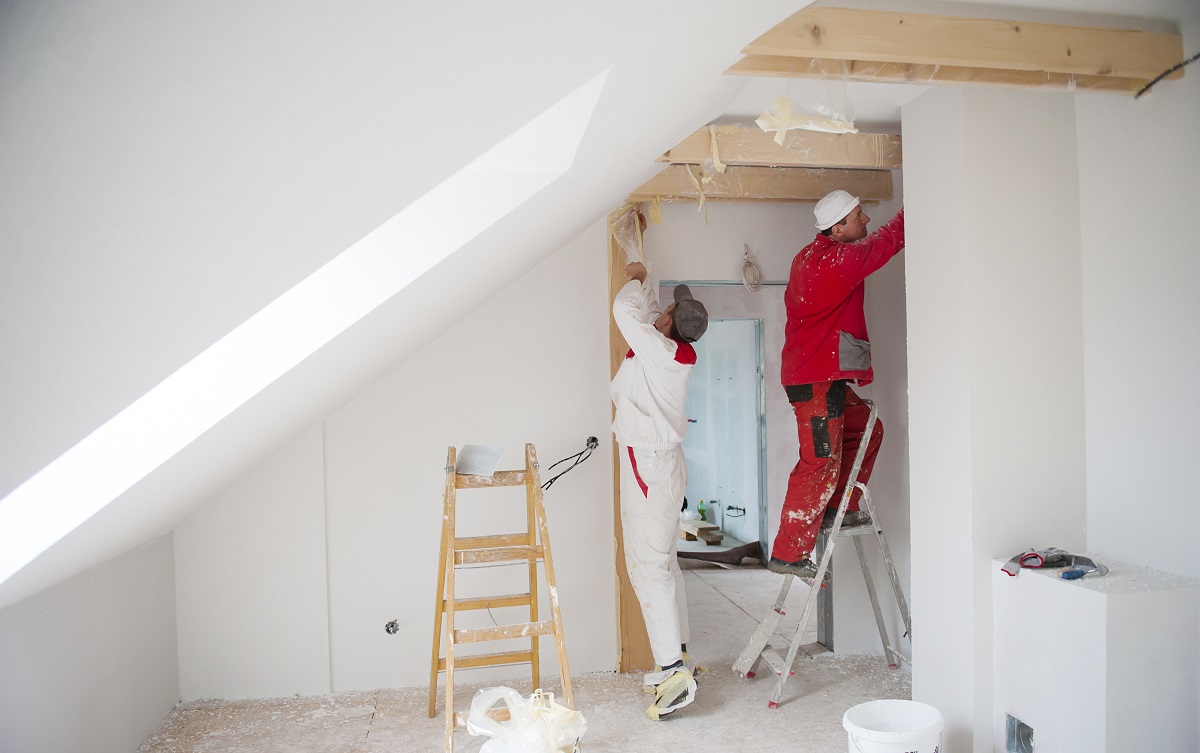
When a building or room is being painted, whether in a home or commercial venue, the proper protection solutions must be in place to keep furniture protected. When decorating, it can be easy to damage furniture, floors and the like by spilling paint if you haven’t covered them up correctly.
At Proguard, we are the protection solution specialists, so if you are new to the industry, have a big new painting job coming up, in this guide, you will discover how to correctly cover furniture and the right products to use, as well as some other helpful tips for a job well done.
Guidance for covering furniture when painting
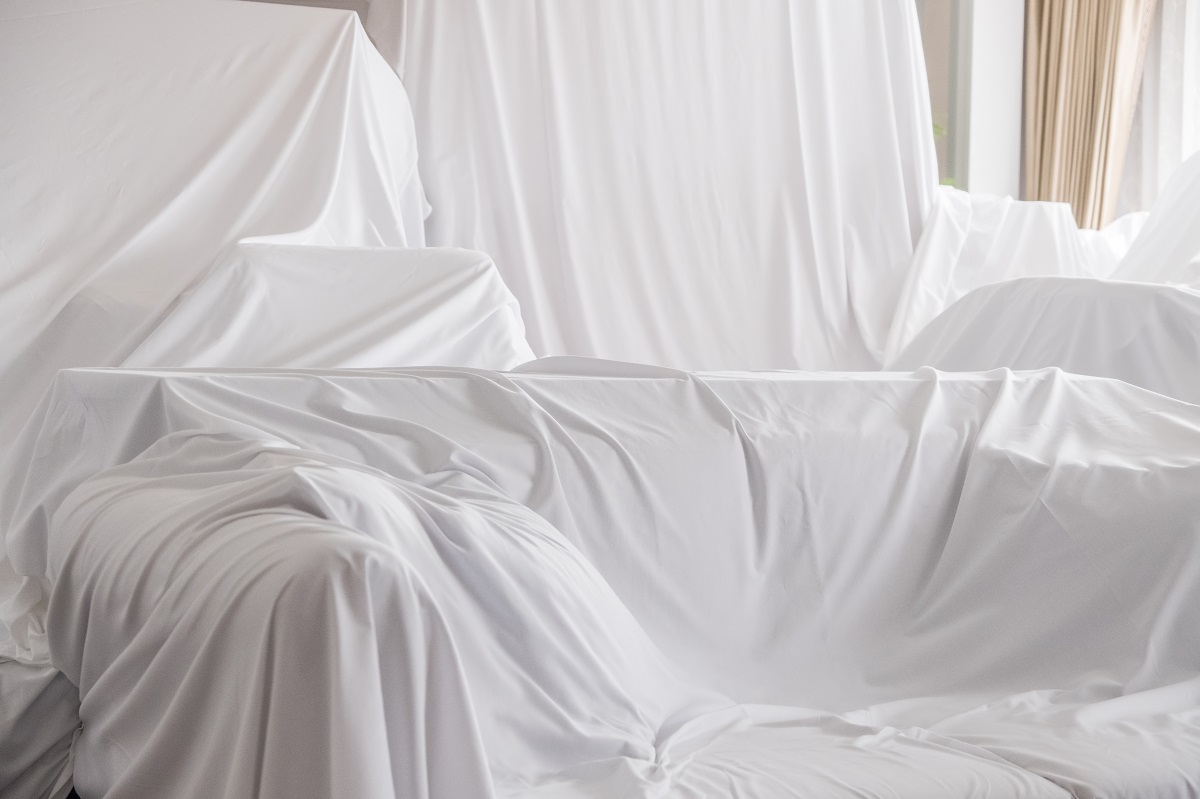
Cover furniture with the correct sheeting
When it comes to protecting furniture during a painting or decorating job, you will want to cover up the items with the correct type of sheeting after moving them to the centre of the room. By using dust protection sheets to cover up furniture, you will be able to cover the surfaces in question to protect them from both dust and paint drips/heavy spills. Dust sheets are the go-to protection solution for both professionals and home DIYers and are reusable/washable so they will be perfect for your next paint job.
Another solution you might want to consider is polythene sheeting, which is used for protecting furniture during decoration jobs and removals. This is a product that is super easy to use, allowing you to quickly wrap items of all shapes and sizes.
The team at Traditional Painter, a network of specialist kitchen painters, have shared the following about their own protection protocols when painting: “I ask customers to remove the small items before I start work. When something cannot be removed for practical reasons, I would protect it with plastic. If the room is large, or there is no other option, I would place the furniture in the middle of the room and cover it all with plastic sheeting.”
Make sure you have enough sheeting
Planning is key for any decorating or renovation job and part of this process should be making sure you have enough sheeting to properly protect the furniture in question. So, take the time to assess what furniture will be staying in each room and will need to be covered up and then make sure you order enough of your chosen sheeting to get the job done. The last thing you want is to be starting a job and have to take risks because you haven’t prepared properly.
Go heavy-duty for protection for larger items
Some of the furniture you will encounter during a job or project will be of a larger variety. When coming across these bigger, bulkier items, it’s a good idea to opt for a heavy-duty variety of sheeting. Whether for dust sheets or polythene sheeting, choosing heavy duty will offer you more protection and help you look after those often more expensive and harder to replace items of furniture.
Remove furniture if need be
There may be situations during your paint job when it makes more sense to remove certain items of furniture from the area being decorated. For example, small items and furniture that can easily be picked up can be placed somewhere else, allowing you to move around the room more easily to paint. This will also ensure that no paint gets on these items during decorating. However, sometimes removing furniture isn’t possible due to their size or the nature of the job so having your protective coverings at hand will be key to success.
Don’t forget to protect your floors
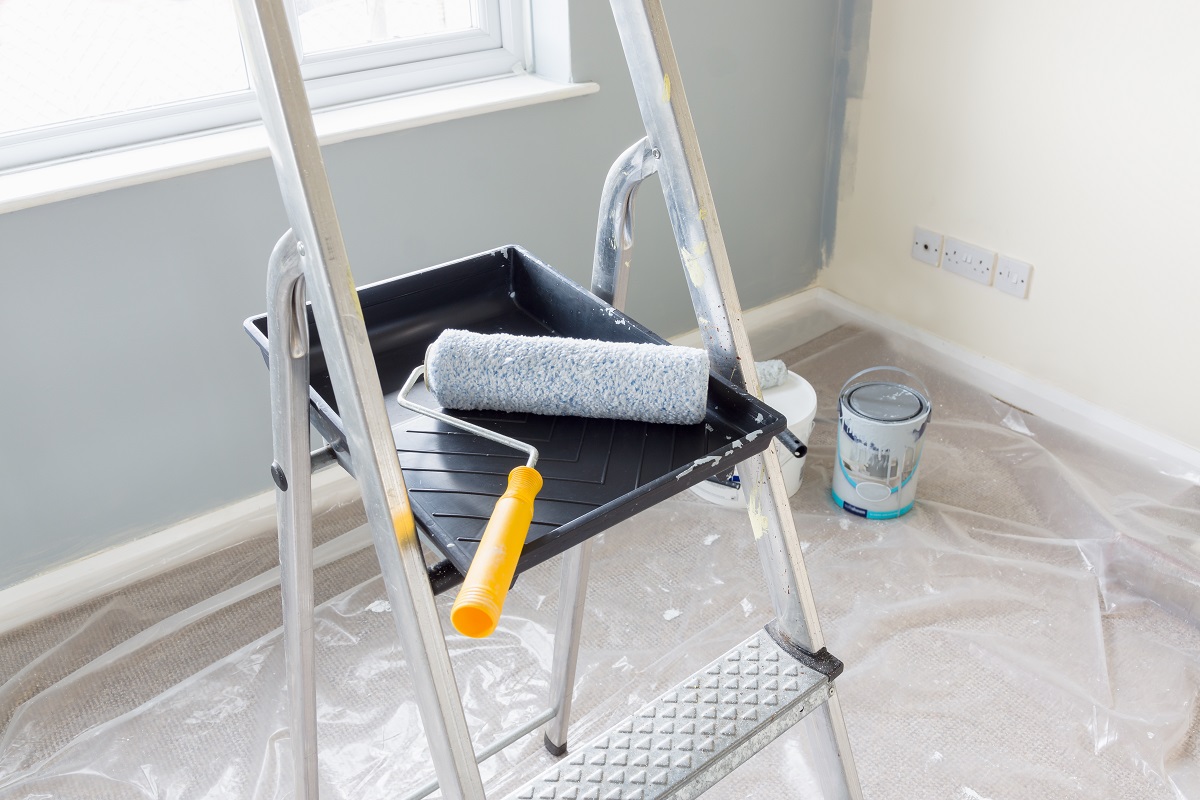
Protecting furniture is just one part of the task when it comes to painting and decorating. There are other areas that will need protection too and this includes the floors. As with the furniture, making sure that you have the right protection solution in place is vital, allowing you to get to work painting ceilings and walls with the peace of mind in knowing that the floors will come to no harm.
To protect carpeted floors properly, carpet film is a solution that should be considered. Thanks to its adhesive backing, it adheres to the carpet to ensure that the film stays in place while you do your work. Once the job is finished, simply peel away. So, if you have a painting job or DIY project coming up, utilising some carpet film to protect floors is certainly the way to go.
Additional tips
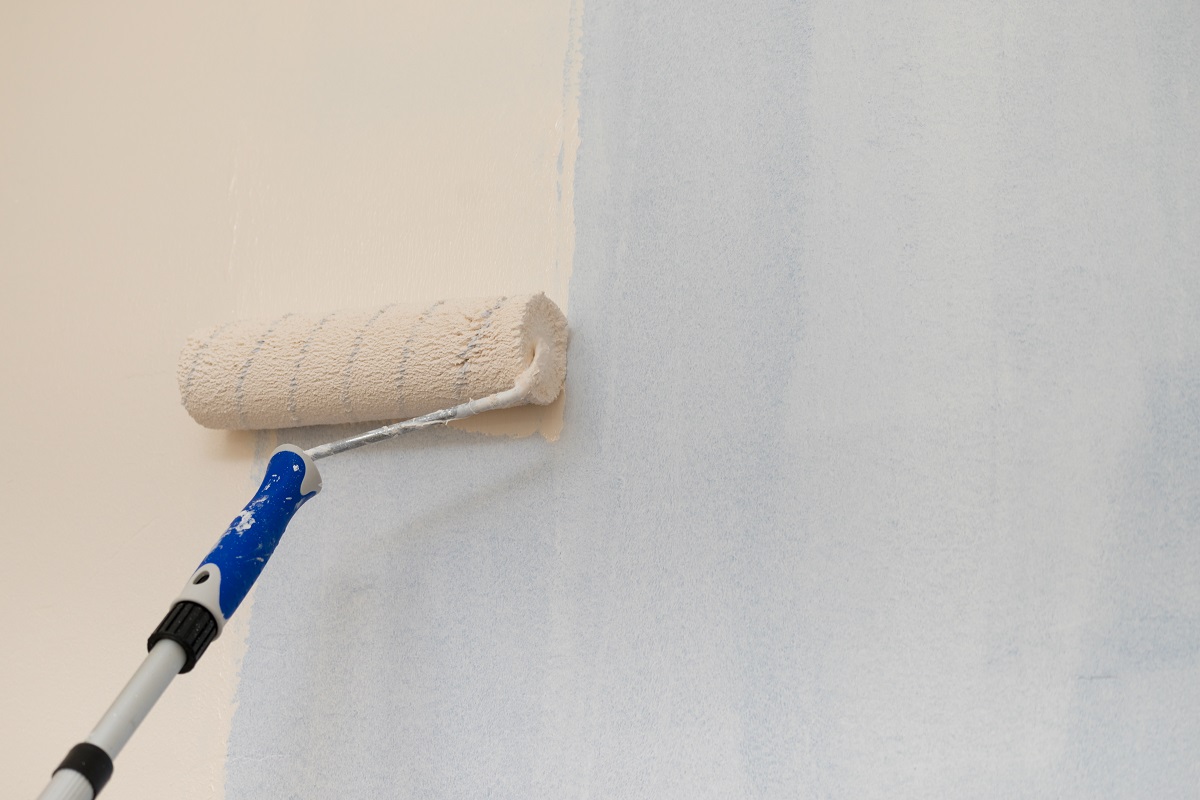
What to do if paint gets on the furniture
If you happen to get paint on unprotected furniture, try not to panic, there are some options. For example, if you happen to spill paint on wooden furniture, Andi, from the blog My Beautiful Adventures, recommends: “If it is a small spill, just let it dry down and scrape with a plastic paint scraper or putty knife. Do not scrape too hard, as you can scratch the wood. Do not apply any paint thinner unless you know what finish was used on your furniture.”
Remove wall hangings
When painting, you should also make sure to remove any wall hangings and window dressings to make sure that they are protected too. Painting and decorating service Paint My Home advise: “Take down all blinds, curtains and poles and store in another room. This will make it much easier to paint around your windows and frames without the risk of paint damage to these expensive investments. Remove any pictures or mirrors you have hanging on the walls. If you aren’t sure whether they will go back up in the same place, the holes left from your fixtures can be filled and sanded ahead of starting to paint.”
Tape off
Taping off certain elements in the room is always advisable when painting. By using the correct tape, you can ensure that your paint job is as neat and tidy as can be, with nice straight lines around skirting boards, light fixtures, and windowsills.
Josh, from the home décor and crafts blog A Beautiful Mess, stresses the importance of taping off: “Take the extra time and tape off your windows, sills, countertops, floors—basically anything not getting painted. The same thing with door hardware; take off the knobs, tape hinges. It takes a lot of time to do. It’s a hassle. But after you’re done painting, and you’re peeling off the paint and plastic and putting back on the knobs, it’ll look so good! You’ll feel so good!”
Get professional help
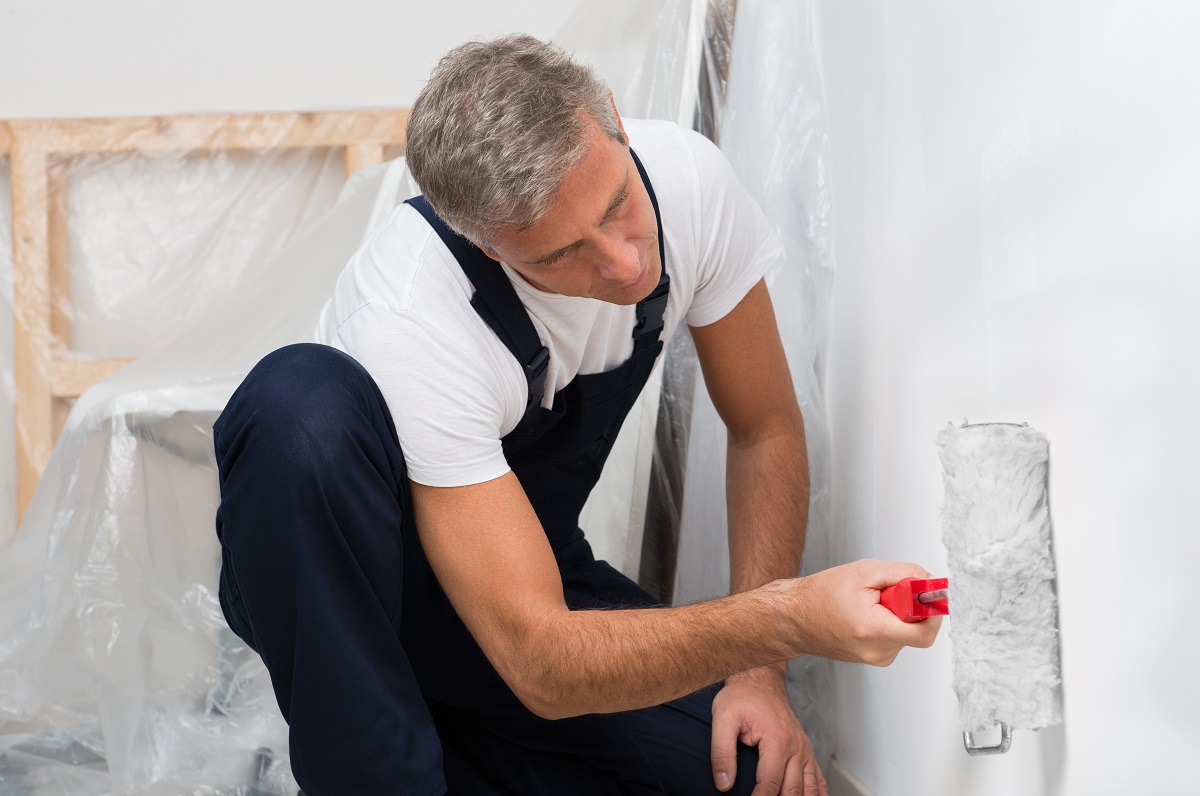
Some tasks are better left to the professionals. If your next project involves an intricate painting job, despite your skills in other areas, reach out to a professional painter or decorator. They will ensure that the task is done right, and any furniture is protected correctly.
Explaining the importance of a skilled decorator, handyman service Fantastic Handyman shares: It’s tempting to approach a painting job as if it is child’s play. Unfortunately, this is not the case, otherwise, the countless professional painters and decorators across the globe would not be there in the first place, would they? Truth is, there are one too many things that can go awry with your interior redecoration, especially if hastily put together.”
The Painting and Decorating Association is the UK’s largest trade body for professional painters and decorators. If you think you need some help with an upcoming painting project, you can use the website’s search function to find a professional in your area.
Tips for covering furniture when painting
- Cover furniture with the correct sheeting
- Make sure you have enough sheeting
- Go heavy-duty for protection for larger items
- Remove furniture if need be
We hope the above tips have proven useful. By adhering to the above advice, you will be able to give furniture the level of protection it needs to get the job done right without any mishaps.
Discover all of our protection solutions by browsing our website and head to our news page for more tips and advice.

